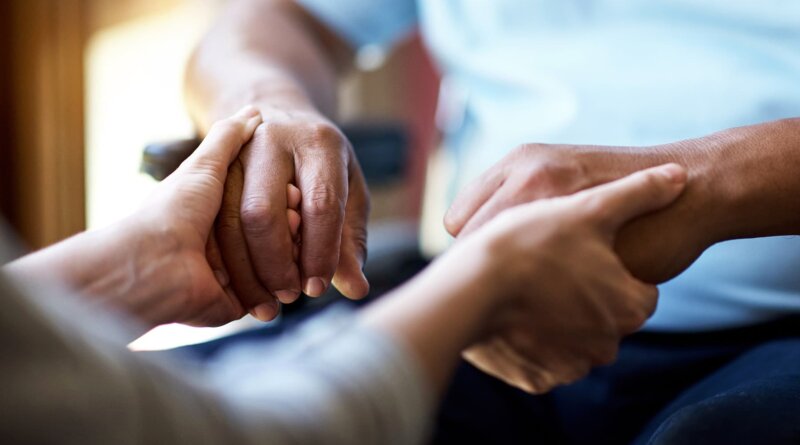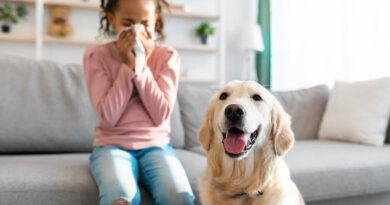For Homeless People, Care Homes Offer a Safe Place to Die With Dignity
Jan. 10, 2023 — Tashi Taliaferro doesn’t want anyone to die alone.
Having worked for more than 30 years as a nurse — 12 of them as a hospice nurse — Taliaferro has always felt comfortable around the sick and dying.
What bothered her was the number of her patients who died without the comfort of family or friends.
“We see people who are in their 80s or 90s with no family. We see veterans and the homeless and the underserved who are forgotten,” says Taliaferro, the assistant director of nursing at Advanced Nursing + Home Support, a home health care company in Rockville, MD. “We’ve been there with people who have had no one, and it just goes straight to my heart.”
Taliaferro is in the process of opening a residential home for homeless and chronically underserved people in her community of Montgomery County, MD, outside of Washington, D.C., which has one of the highest rates of residents living in poverty in the country. Each night, more than 4,410 people in the nation’s capital experience homelessness.
“No one should die alone unless by choice,” Taliaferro says. “I think anyone, no matter how old or young or rich or poor or whatever their background, deserves the utmost integrity, grace, compassion, and love.”
The Growing Need for End-of-Life Home
As the baby boom generation ages, the number of familial caregivers will become insufficient to the task of providing that care. The AARP Policy Institute estimates that by 2030, four potential family caregivers will be available for every one person over the age of 80. That’s compared to a ratio of 7 to 1 in 2010. By 2050, those numbers will fall to 3 to 1.
Of course, the population of people without homes also is aging. A 2019 report from the University of Pennsylvania projects that the number of people 65 and older experiencing homelessness in the United States will nearly triple over the next 7 years, from 40,000 in 2017 to 106,000 by 2030.
Homeless Americans age prematurely, the result of the chronic stress associated with living in shelters, on the streets, and couch surfing. The phenomenon is known as “weathering,” an area of particular interest for Rebecca Brown, MD, MPH, a geriatrician and assistant professor of medicine at the University of Pennsylvania in Philadelphia.
Brown’s work has found that people 50 and older experiencing homelessness have similar or higher rates of geriatric conditions, cognitive impairment, urinary incontinence, frailty, and difficulty doing basic daily activities like bathing and dressing, than people in the general population with an average age of 80.
“They get these aging-related conditions when they’re younger, and then not surprisingly, they also die earlier,” Brown says.
Many who have a terminal illness like cancer will continue to care for themselves in homeless shelters as long as they can, according to Travis Baggett, MD, director of research at the Boston Health Care for the Homeless Program.
“But once they can no longer get out of bed on their own or bathe themselves or need oxygen, which most shelters don’t allow, they can no longer stay there,” Baggett says.
These people may end up cycling between hospitals or nursing homes, where they receive medical care until they die.
Taliaferro has been working with Emily Cavey, a professional photographer and end-of-life doula. Like a birth doula, Cavey provides psychological, emotional, and physical support to dying people and their families. The pair bonded after Taliaferro coordinated care for Cavey’s dying loved one through her job, finding that they shared a similar desire to help people in the final stages of their lives.
Taliaferro told Cavey about her idea of a residential home to empower underserved and formerly homeless people to die with dignity, and they eventually launched the Good Hearts Foundation, a nonprofit organization, to raise money for their venture.
They are still in the early stages of finding a potential donor for a suitable house for the operation, as well as other sources of funds like grants to set up and run the home.
For now, how the home will be licensed or permitted is unclear. Taliaferro and Cavey are also working out what kind of license they’ll need to operate as a residential home; county officials in Maryland at first thought the pair would need a hospice provider license. But the home itself won’t offer medical services. Residents will be able to have outside health care providers come in to deliver services, but there will be no financial ties between the residential facility and those companies.
They already have a name for the first home: Maddie’s House, after Taliaferro’s mother, who died in a car accident when Taliaferro was 2 years old. They hope to open in 2023.
The Grace House: A Model Care Home forHomeless People
Taliaferro got her spark for Maddie’s House after learning about the Omega Home Network, a membership of 40 residential homes and others in development that all serve the same purpose of providing a loving environment for people who would otherwise live alone in their last days.
The Grace House, a care home in Akron, OH, and part of the network, opened in September 2022 for terminally ill people.
Funded by grants and donations, the facility has three requirements for residents: They must be enrolled in a hospice program through Medicare, Medicaid, or a private insurer; they must have limited financial resources; and they can’t have someone who could otherwise house and care for them. All services are free to residents.
Holly Klein, a registered nurse and the founder of Grace House, routinely cared for homeless patients during her 14 years as an in-home hospice nurse in Akron.
“I use the term ‘home’ loosely because it was really wherever the patient lived,” she says. “I met people under a bridge, in motel rooms, in homeless shelters, and some just in living conditions that were not dignified. Seeing people die alone in those conditions was a burden, and I started asking the question of, ‘Isn’t there more that we should be doing?’”
Hospice providers – who do not have financial ties to Grace House – make regular visits to individual residents just as they would if residents had their own private homes, to manage clinical care, while the home’s staff assist residents 24/7 with cooking, cleaning, personal care, and administering medication.
“We think of ourselves as the surrogate family,” Klein adds. “And anything that a hospice program can teach a family to do in their home, they can teach our staff to do, such as simple dressing changes and medication education.”
Since opening, 16 residents with terminal illnesses like heart disease and kidney disease have come to Grace House to live and die within its walls.
Five residents experienced homelessness before arriving, and several came from homes “that were literally falling in on them or didn’t have running water, electricity, or heat,” Klein says.
Residents of Grace House who lived on their own for years may enter the facility withdrawn and wary. But many forge friendships with each other, staff, and volunteers – and even reconnect with estranged loved ones in the final days and weeks of their lives.
“We provide the environment where they feel safe and secure, which enables them to let down some of those walls and old habits to reconnect with people,” Klein says. “It’s been amazing to see.”




